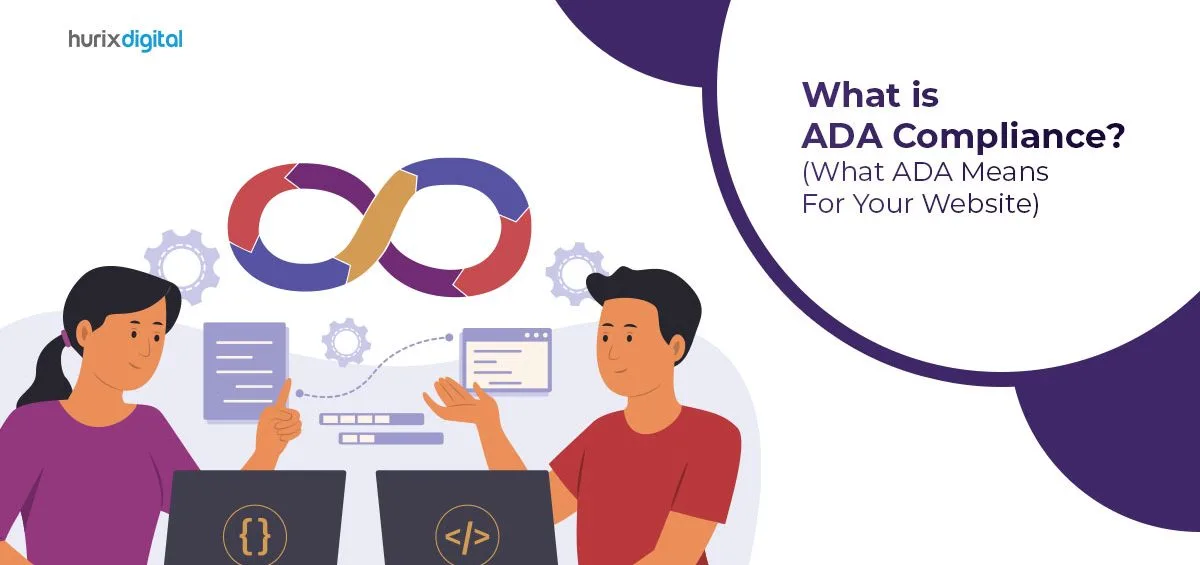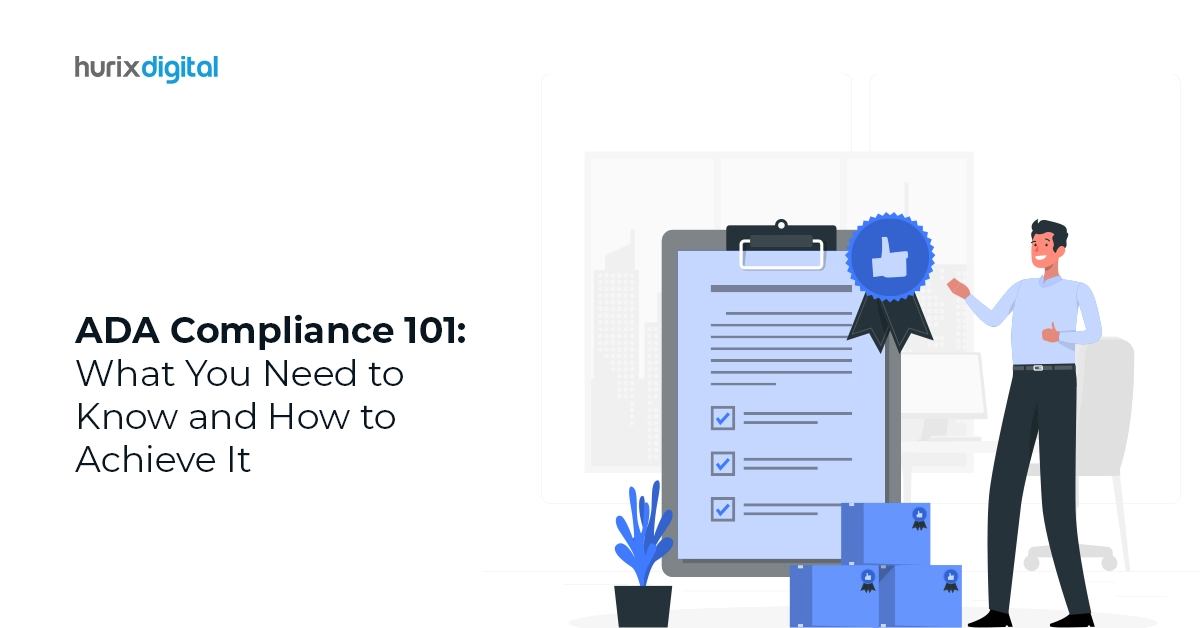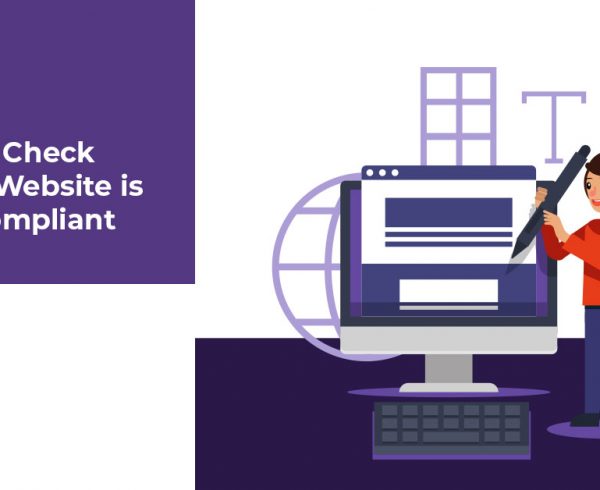What is ADA Compliance?
The Americans with Disabilities Act, also known as ADA, mandates businesses to ensure access to people with disabilities. The Act, which was passed in the year 1990, seeks to prohibit discrimination against people with disabilities such as seeing, hearing, speaking, walking, mental impairments, etc. Businesses that fall under the ambit of this Act have to make accommodations such as the use of Braille for visually impaired customers or wheelchair accessibility for those who have difficulty in movement. This act lays down how to make a website ADA-compliant to meet the ever-changing needs of people, especially those with disabilities.
In 2010, ADA was extended to include electronic media, mandating all electronic and information technology such as websites to be designed to cater to the needs of people with disabilities. Web content has to be made accessible with features such as voice to cater to those with hearing disabilities and screen readers or other assistive technology for the blind, making your website ADA-compliant.
An ADA-compliant website protects your business against lawsuits, builds your brand, and also accommodates potential customers with disabilities.
But what does an ADA-compliant website look like?
Related Read: All You Need to Know to Ensure Web Accessibility
While there are no clear rules and regulations, all businesses that fall under the compliance guidelines are required to develop their websites and other electronic content in a way that provides ‘reasonable accessibility’ to people with physical disabilities.
So, does this mean that only businesses that fall under the ambit of this rule, that is, Title 1 businesses operating 20 or more weeks per year with at least 15 full-time employees; or Title III businesses falling under the category of “public accommodation,” are covered by the ADA? While it is mandatory for these businesses, in a global marketplace, it makes sense for all websites to be ADA-compliant. This not only helps companies to strengthen their brand but also find potential customers in people with disabilities.
So, how to make your website ADA-compliant? Check your website with an ADA compliance checker and find out if it is accessible to everyone. If not, then adopt the World Wide Web Consortium’s Web Content Accessibility Guidelines (WCAG). In fact, the WCAG guidelines are now widely accepted worldwide as a means to design an ADA-compliant website.
Also Read: 5 Reasons Why Enterprises Need to be WCAG Compliant
Steps to design an ADA-compliant website
1. Evaluate Your Existing Website
If you already have an existing website, then the first step should be to analyze the layout, design, and content. You can do this manually using screen reader software or use specialized programs such as Lighthouse or WAVE. For your website to be ADA-compliant, it should be understandable, perceivable, operable, and robust. Study your website under these four categories and identify the gaps to fill.
2. Use ADA-compliant Graphics
Graphics play a crucial role in ensuring your website is perceivable and ADA-compliant. Avoid graphics that flash for more than three seconds as they are very distracting. Make sure to add both text and audio descriptions, and captions that can be heard by the visually impaired or read by those with hearing disabilities.
3. Add Alt Text
To make your website understandable, add Alt text for all your images. Alt text enables audible descriptions of your images.
4. Use Readable Fonts
Fonts are a crucial component of an ADA-compliant website. Fonts such as Open Sans, Georgia, and Quicksand are easy on the eye. Also, give some thought to the colors of the font and the background. A light font will not work well with a light background; rather, it will put a strain on the eyes of the people trying to read your content. Avoid a flashy background that takes away attention from the text. A good design practice is that the design should never overpower the content, rather it should highlight the text in a manner that is pleasing and easy to read. A light background with a dark font gives good results.
5. Add Logical Features
A crucial aspect of any ADA-compliant website is that it should be designed predictably. All your web pages should follow a common pattern. So, if your images are placed centrally on the home page, they should follow the same pattern on all pages. Similarly, for navigation buttons, they should be placed uniformly on all pages so that the readers don’t have to search for them on every page. Then again, you may have a pop-up window with a call to action, however, the user may not want to follow the lead. In this case, the users should be able to see the ‘X’ sign to close the window. You can put the close sign in the upper right corner, and in a visible color and size. Then again, to make your website ADA-compliant, ensure that you provide both readable and audible instructions to perform some reader activity, for example, filling out a form.
6. Use Standard HTML Tags
By using standard HTML tags, you can ensure that your website is robust and the code is readable by an assistive reader. All your documents, including the PDF files, should be in the text format. This is because the reader software for the visually impaired may not be able to accurately read documents with complex images. Most website design platforms such as WordPress are designed for HTML and so making your website ADA-compliant with HTML tags should not be difficult.
7. Keyboard-friendly Website
The operable category of an ADA-compliant website ensures that your readers can interact with your website using a keyboard. This is necessary because not all people are comfortable navigating with a touchscreen or a grip mouse. Further, the readers should be able to slow down automatic scrolling or pause content. Avoid using auto-play videos or those with a time limit.
8. Regularly Update Your Website with Evolving ADA Compliance Regulations
With evolving knowledge and technology, ADA compliance regulations are also constantly evolving. As new technologies become mainstream, changes have to be incorporated into the code to make the website accessible to assistive readers. It, therefore, means that you have to remain constantly updated on the new rules and regulations and keep your website ADA-compliant at all times.
Download Whitepaper: WCAG – The Road to Making Businesses Accessible
In Conclusion
A website allows you an international audience and therefore, you must design it according to international standards. One such standard is the ADA, a means to ensure that your website and all other electronic content are accessible to people with certain disabilities. While there are no clear-cut guidelines on this aspect, knowing how to make your website WCAG-compliant and following WCAG guidelines can help you make your website ADA-compliant and WCAG-compliant. The WCAG compliance checklist throws light on the best practices for website ADA compliance, for example, how to design the layout, the font and background color to use, the type of audio and video content to incorporate, and more. An ADA-compliant website is a win-win for all – people with disabilities have access to the content they need, and businesses, on the other hand, profit from more traffic, more clicks, and consequently more business.
Need to know more about our Products & Services? Drop us a note at marketing@hurix.com











